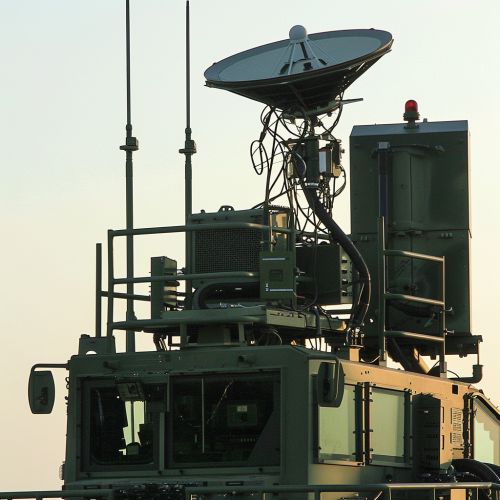Electronic attack
Introduction
An electronic attack (EA) is a subset of electronic warfare involving the use of electromagnetic energy, directed energy, or anti-radiation weapons to attack personnel, facilities, or equipment with the intent of degrading, neutralizing, or destroying enemy combat capability. In modern warfare, electronic attack tactics are an integral part of strategic planning, with a focus on disrupting the enemy's command, control, and communication systems.
History
The concept of electronic attack has its roots in the early 20th century, with the advent of radio technology. During World War II, the use of radar and radio communications led to the development of early forms of electronic attack, such as radar jamming and spoofing. The Cold War era saw a significant advancement in electronic attack technologies and strategies, with both sides investing heavily in research and development.
Types of Electronic Attacks
Electronic attacks can be broadly classified into three categories: jamming, deception, and directed energy attacks.
Jamming
Jamming is the deliberate emission of radio frequency signals to interfere with the operation of a radar by saturating its receiver with noise or false information. Jamming can be categorized into two types: spot jamming and barrage jamming.
Deception
Deception in electronic warfare involves the manipulation, distortion, or falsification of electronic signals to lead an enemy into interpreting them incorrectly. This can involve the use of decoys, false target generators, and other sophisticated techniques.
Directed Energy Attacks
Directed energy attacks involve the use of high-energy lasers or microwave devices to physically damage or destroy enemy equipment. These types of attacks are becoming increasingly common in modern warfare.
Techniques and Technologies
There are several techniques and technologies used in electronic attacks, including radar jamming and deception, electronic counter-countermeasures (ECCM), and anti-radiation weapons.
Radar Jamming and Deception
Radar jamming and deception techniques are used to interfere with an enemy's radar system, rendering it ineffective. This can involve the use of noise jamming, repeater jamming, or deceptive jamming techniques.
Electronic Counter-Countermeasures
Electronic counter-countermeasures (ECCM) are used to protect against electronic countermeasures (ECM). ECCM techniques can include frequency hopping, polarization, and power management.
Anti-Radiation Weapons
Anti-radiation weapons are designed to home in on enemy radar, radio, or other electronic transmissions. These weapons are typically used to suppress enemy air defenses in the first line of an attack.
Impact on Modern Warfare
The use of electronic attack strategies has significantly changed the landscape of modern warfare. By disrupting an enemy's ability to communicate and gather information, electronic attacks can significantly degrade their ability to effectively coordinate and execute military operations.
Future Developments
Advancements in technology continue to drive the evolution of electronic attack strategies. Emerging technologies such as cyber warfare, unmanned systems, and artificial intelligence are expected to play a significant role in the future of electronic warfare.
See Also


